The spectacular walled city of Saint-Malo
A bit of history
The fantastically fortified port city of Saint-Malo lies some 20 nm south-west of Iles de Chausey. While it has no doubt been inhabited for much longer, Saint-Malo was established as a port about 2000 years ago by the Gauls. They grudgingly passed it on to the Romans, who looked after it until the Bagaudae revolt saw it fall under new, and Celtic-influenced, management. The city then had a long history of semi-independent rule, ostensibly under the rule of the Dukes of Bretagne but, in reality, often largely operating under its own rules (indeed at one point it was an independent city state).
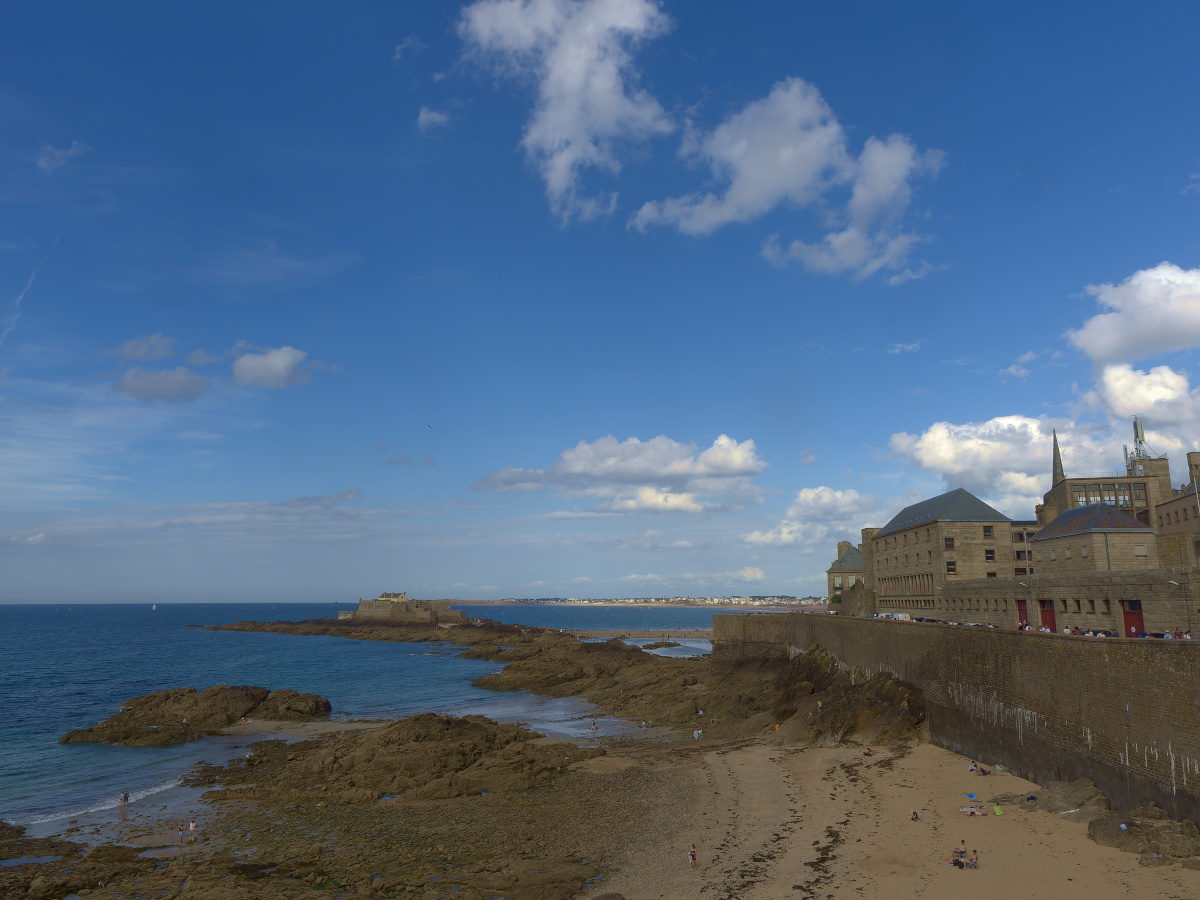
Those walls would not be easily breached.
A city of corsairs
In the 1700s it was a major port for corsairs who, aside from making voyages for trade, smuggling and discovery far afield (e.g. to Canada), spent their time harassing British and Dutch shipping through the English Channel. All very exciting, to be sure, but this had the effect of bringing down the wrath of the British who, in 1758, popped by to teach the city a lesson. Happily, for the Malouins, the British got distracted by ships across the river and devoted most of their negative energy to attacking the town of Saint-Servan. The Saint-Servanians were no doubt not entirely undeserving but it does seem a touch unfair.
More Vauban
Anyway, given the piratical disposition of the locals and the long running French-English antipathies, it is probably no surprise that much of Saint-Malo’s seafaring revenue was devoted to building defensive fortifications, including the spectacular ramparts of the city itself and no fewer than four of Vauban’s fine forts.
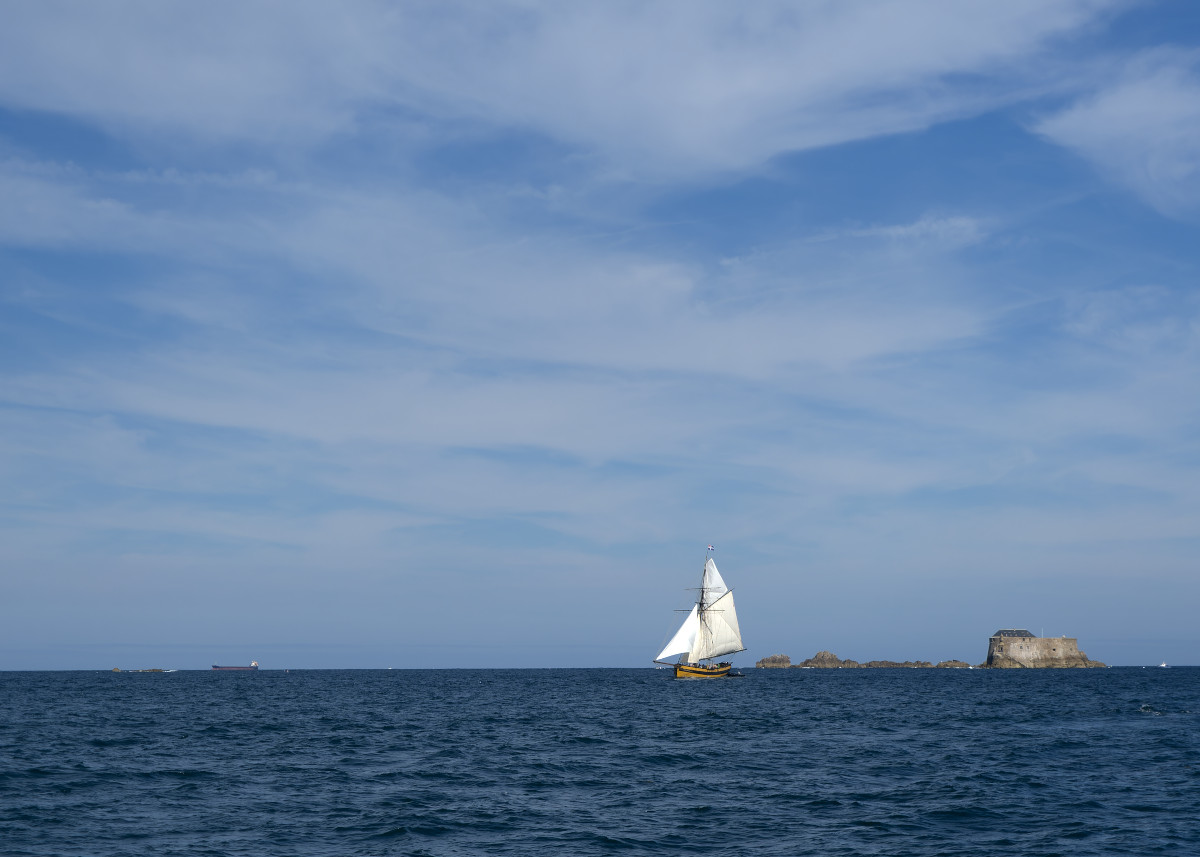
A Vauban fort in the approach to Saint-Malo.
Worth a visit
It would be hard to pass by such a splendid collection of monuments to greed and violence without popping in ourselves. So, we did exactly that. It was also because here we had arranged with fellow Athertonian, Douglas T, a man through whose veins flowed none of the avarice nor love of disorder that had made Saint-Malo what it was.
Those big tides again
Like the Poms, we pulled into the Saint-Servan harbour which, being open to the sea, was a bit more convenient than going in through the locks to the Saint-Malo harbour itself (perhaps that’s what the British were thinking 340 years ago).
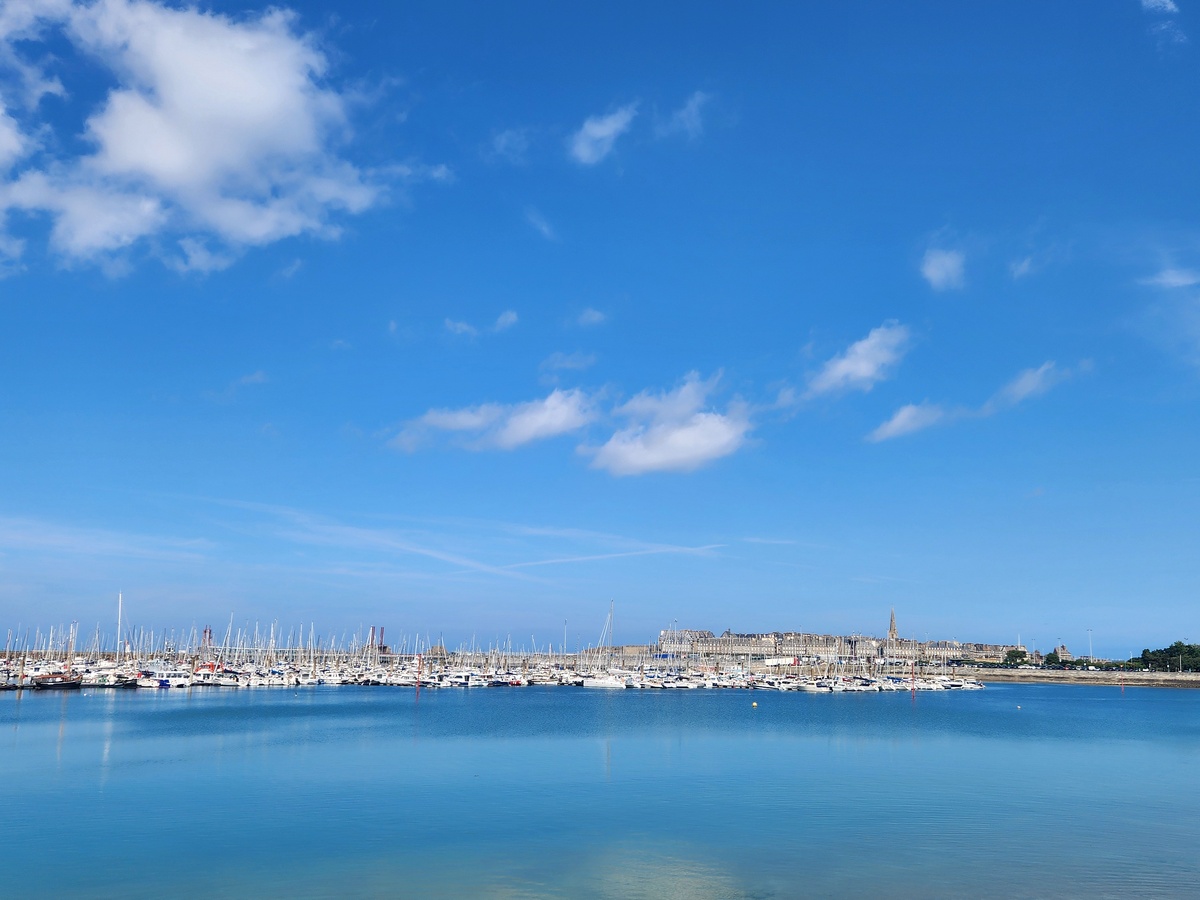
Saint-Servan marina, not a bad spot to hang out.
Saint-Servan is a very pleasant, modernish harbour where the 10+m tides mean that at the ebb the ramp from the floating pontoons up to the harbour wall looks like a steep pitch on a rockclimb.

A very steep ramp during low tide.
Croissants au beurre
Once settled in we took a stroll around the Saint-Servan harbour front, a delightfully non-commercial harbour dedicated mostly to small boats, swimming and lounging on terraces. Here, we ran into another delicious marché as well as a boulangerie with ‘croissants au beurre’ and ‘baguettes croustiallantes’. This ‘au beurre’ detail was certainly not false advertising, and we returned multiple times to enjoy the, by far, best croissants during our travels.

Beaucoup, beaucoup de beurre in the Viennoiseries at the Emulsion boulangerie. Et d’amour, maybe that’s why the croissants were so good.
Inside the walls of Saint-Malo
Next, we wandered across to Saint-Malo itself. What an impressive place that is! High, blank walls rise up from the rocky shore with embattlements and forts sited at key locations. These enclose a tightly packed mass of multi-storied, dun coloured, slate-gabled buildings with racks of chimneys and rows of uniformly tall, white rectangular windows. The walls are so high and long, and the expanse and packing of the city behind them so great that the combined effect almost feels unreal.
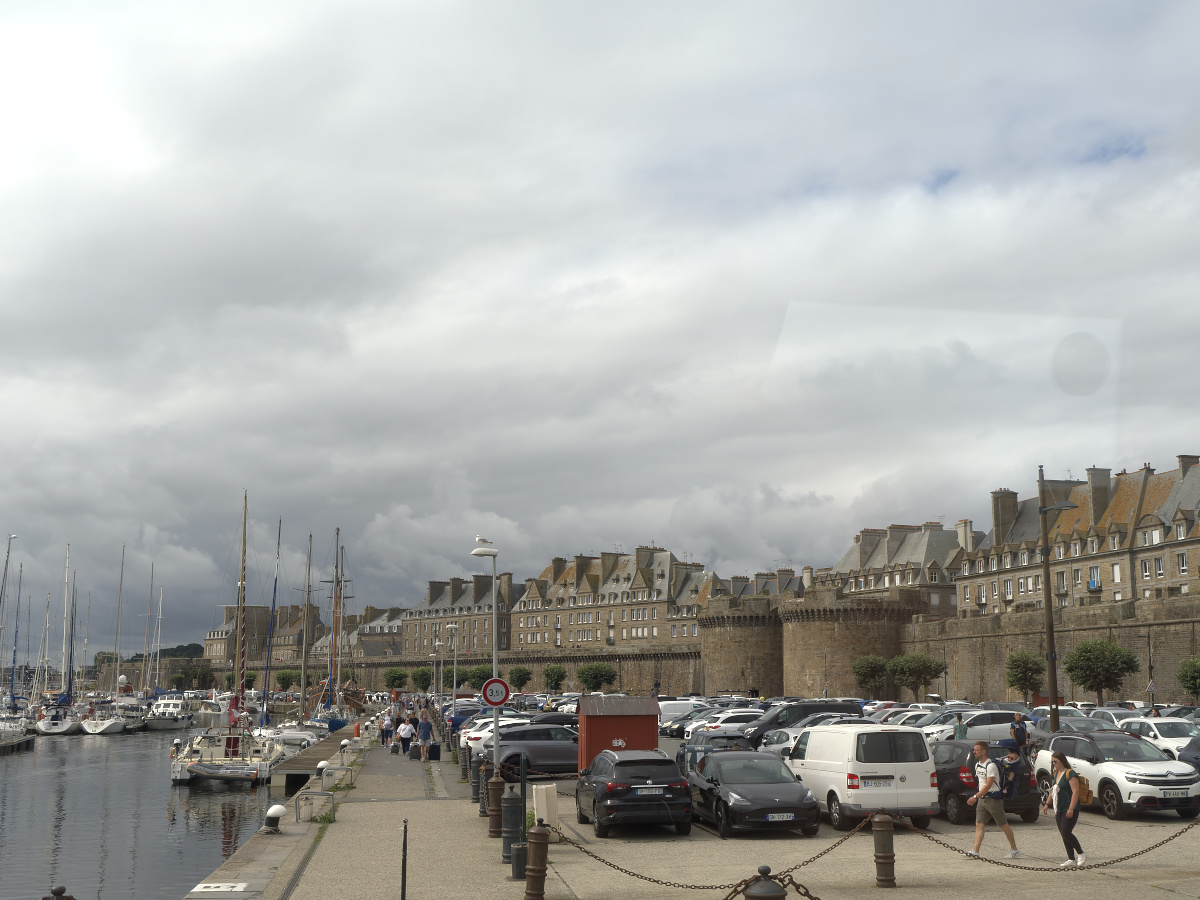
Tightly packed buildings behind the city walls.
Tourists…
Entering the city walls quickly made it very clear that the things that had protected the city from unfriendly strangers for hundreds of years had ensured that it would quickly fall to the siege tactics of modern touristic hordes. Indeed, they were the very reason for the inundation of the city by galette-munching, ice cream licking, wine-guzzling barbarians. It wasn’t just the British come to visit this time though but Irish, American, French, German, Dutch, Japanese and so on. Of course, there was at least two Australians amongst them, probably more.
A rare moment of (almost) empty streets within the city walls.
We tried to enjoy the streets, but after about 10 minutes we escaped to the battlements where the crowds were a bit thinner and the views more expansive. We then fled back to Saint-Servan where we went in search of dinner and bed.
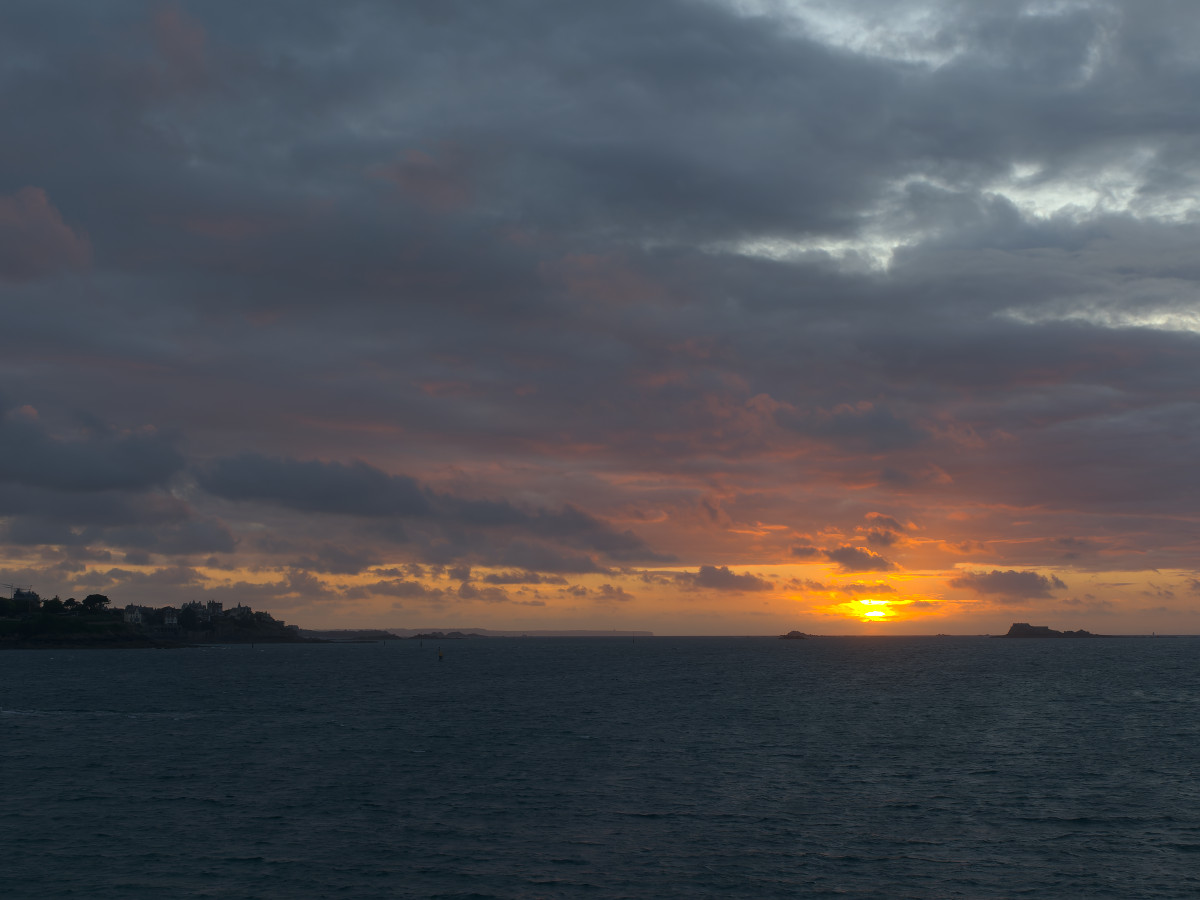
Sunsets in Brittany are not bad either.
Picking up Douglas
The next morning, we wandered along the Saint-Malo seawall and beach suburbs. Lovely tall 19th century houses squeezed up against a high sea wall and a beach that is expansive at low tide and non-existent at high tide. One could well imagine that in heavy weather the wash of the waves would crash over those walls and onto the houses in a quite spectacular fashion. I guess sleeping isn’t easy in the ocean side rooms during those times.
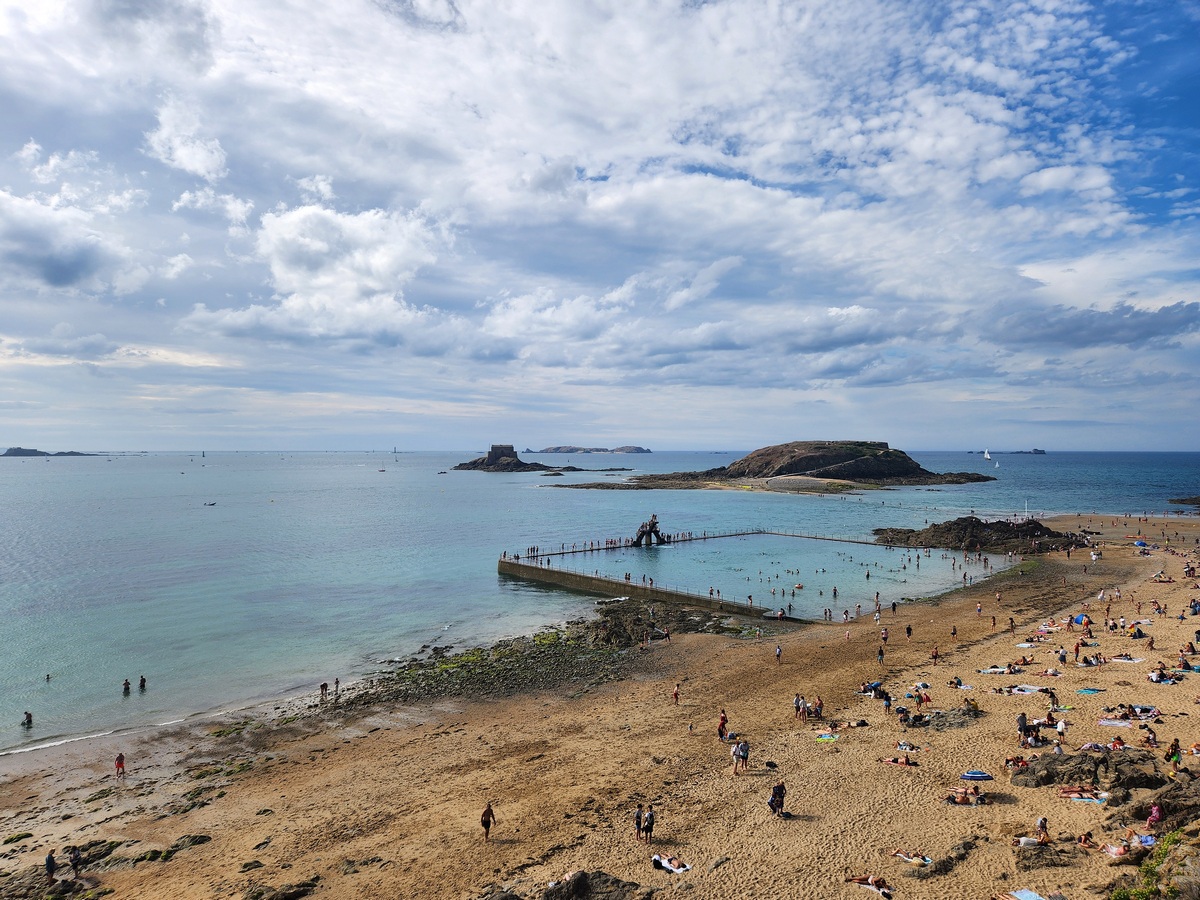
The Saint-Malo beaches felt and looked very familiar, almost Sydney-ish.
Having savoured the very ‘Sydney beach-side’ feel of Saint-Malo’s beachfront, we headed off to the train station to fetch Douglas. The poor lad was feeling a little weary from travel and late nights catching up with friends, so we took him slowly back to the boat to rest up a bit before we went off again for an exploration of the walled part of Saint-Malo and dinner.

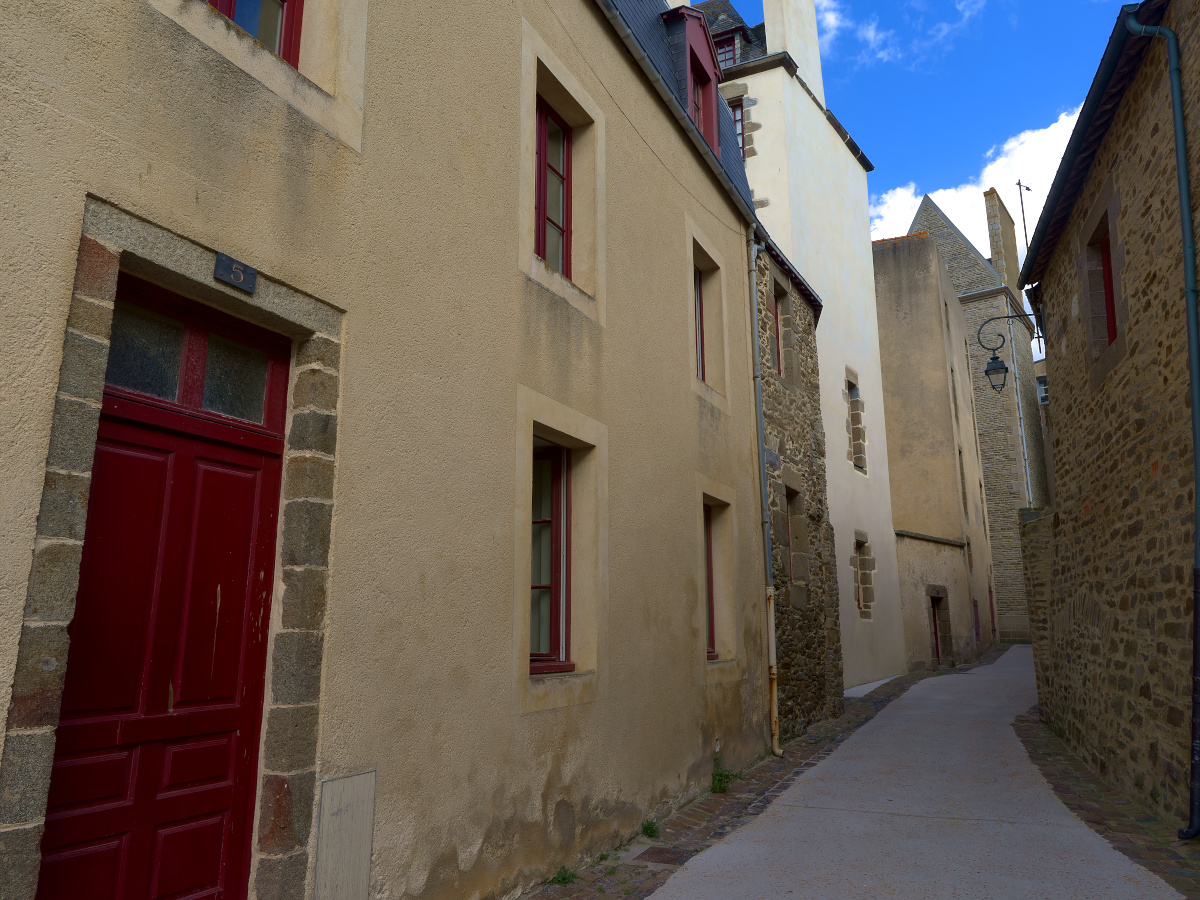
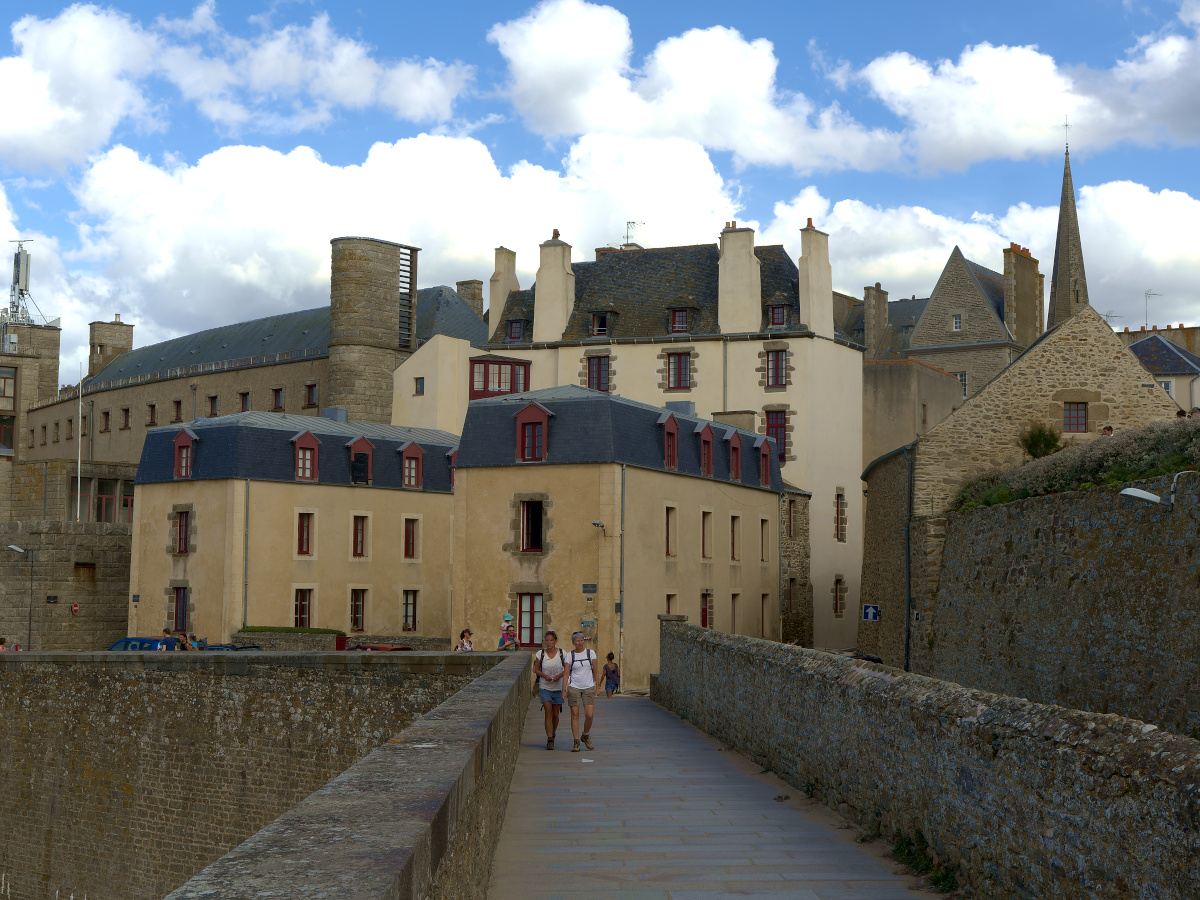

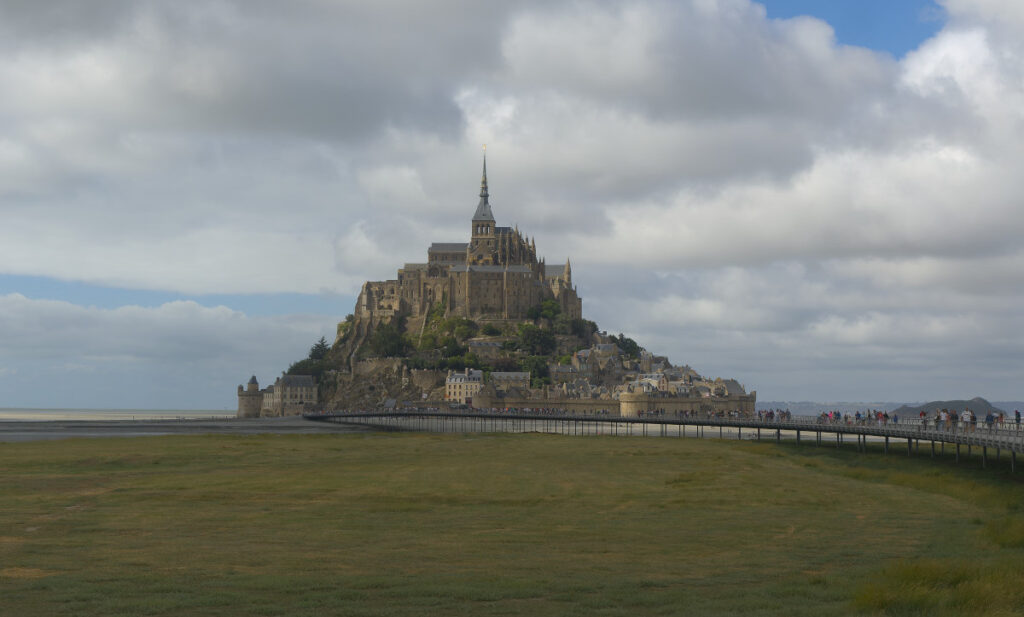
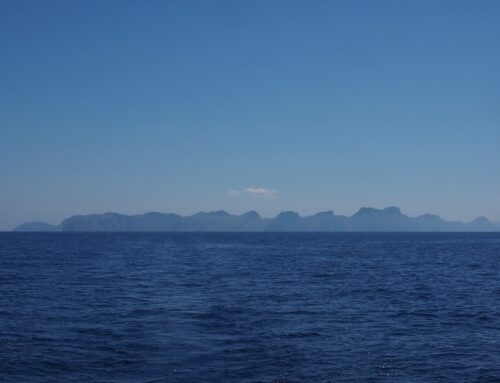
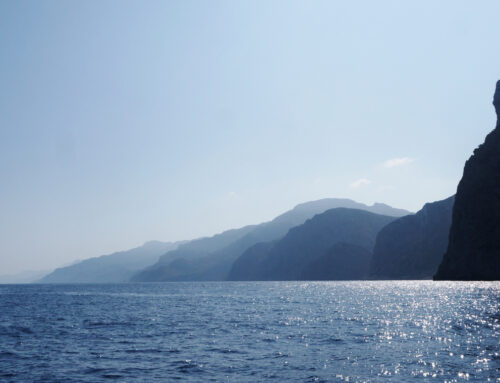
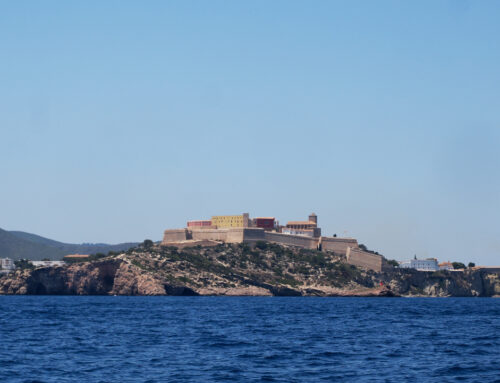
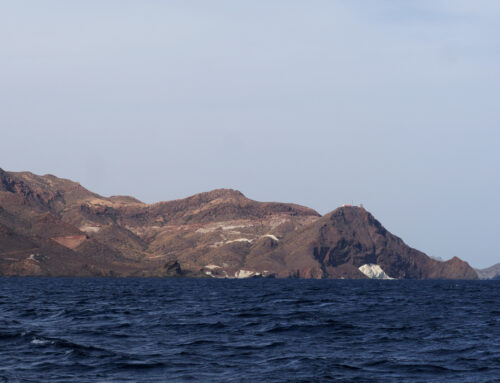
I don’t remember the walk being either slow or respectful of my weary state.
Oh dear, we did try